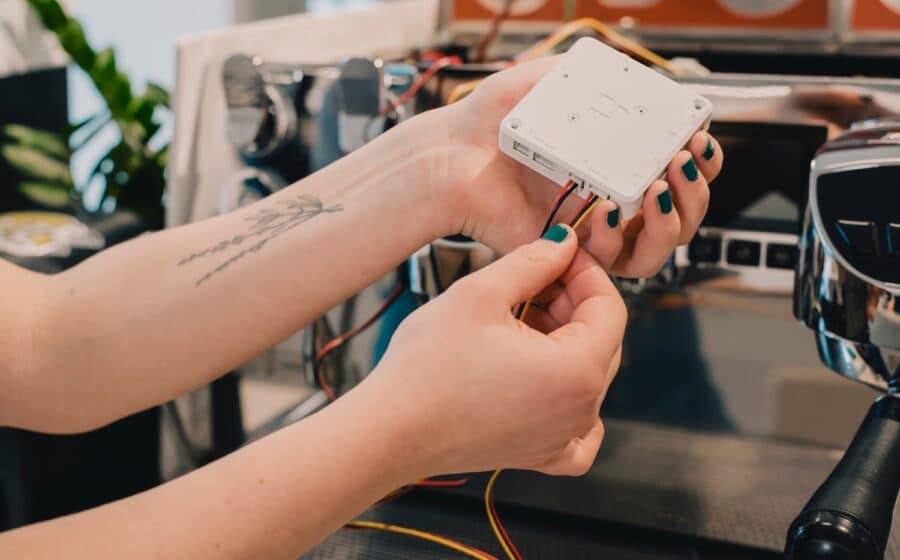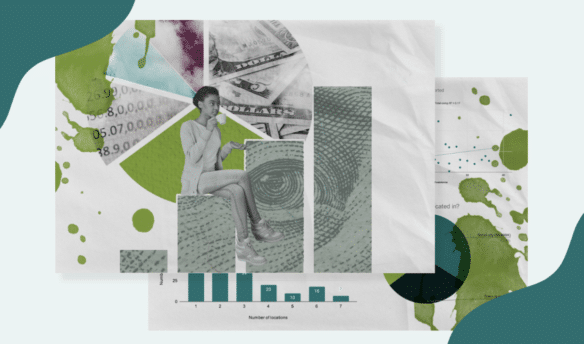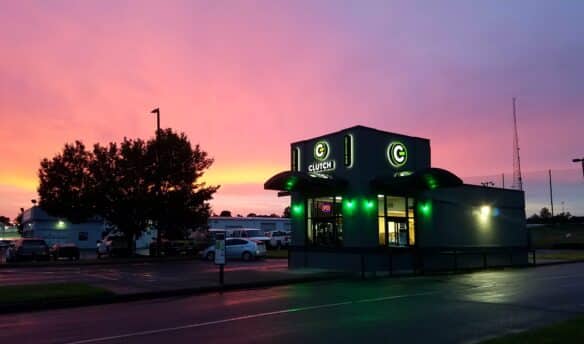This article is sponsored by our partner, Cropster.
What defines success at a coffee shop? It’s not the cafe’s aesthetics or the number of Instagram followers—it’s a shop’s ability to deliver a consistently high-quality experience. On top of superior customer service, loyal customers expect the same great-tasting coffee every time they visit.
But how do you control beverage quality as your coffee shop adds new coffees to the menu, hires employees, and experiences increases in customer traffic? As a coffee business grows and changes, inconsistencies in coffee quality can pop up, leading to unhappy customers and damage to a shop’s reputation.
Fortunately, the days of manually overseeing a coffee program with nothing but sticky notes, a recipe notebook, and a hastily scribbled brew recipe on your grinder hoppers are soon over. Quality control software and connected equipment are changing how coffee shops manage consistency and ensure every customer gets the best cup of coffee possible.
The Consequences of Inconsistencies
Inconsistencies behind the bar can be easy to spot. Perhaps one barista was trained by one staff member versus another, resulting in slight deviations from the company’s standard espresso recipe. But others might be more difficult to notice: a glitch in a grinder or a water flow problem in one of the groupheads of your espresso machine can easily cause problems, leaving customers with undesirable beverages. And the fickle nature of coffee means an espresso recipe that worked yesterday may not work today.

Precision in brewing and serving coffee quality is critical. After all, coffee has only two ingredients, coffee grounds, and water, and the ratio of the two is vital to a customer’s flavor experience, regardless of which cafe location they visit or who is working behind the bar. Some coffee shops work with and expect minor deviations in espresso shots—one barista might pull shots at 30 seconds, one a few seconds longer—but it’s when deviations impact flavor negatively and noticeably affect consistency and quality that your bottom line may begin to suffer.
Marcus Young is the former marketing lead at Cropster, a software company that designs digital tools for coffee businesses and is now VP of Coffee and goodboybob, a California-based coffee roaster/retailer. In these roles, Young educates clients and notes that because coffee recipes rely on precision, a slight difference in dosing can cause problems.
“I had a conversation with a roaster with about ten cafes … they were getting complaints that the coffee wasn’t consistent at one location,” he says. “Their recommended espresso recipe was 18 grams in, 36 grams out. This one particular manager was using 22 grams of coffee per shot. So not only was [the coffee] inconsistent from a customer standpoint but there were also financial implications.”
For an independent cafe owner or operator, how awesome if your roaster was able to say, ‘Hey, I’ve got this tool that, as part of our agreement with you buying my coffee, I can help you better manage your cafes… and provide information from our own QC lab, to make sure that your coffee quality is as good as it can be.’ That’s a huge win. marcus young
A few extra grams might not seem like a lot, but imagine a scenario where a shop pulls around 100 shots daily. Four additional grams per shot equals 2,800 grams, or roughly 6.18 pounds of extra coffee each week. Assuming a standard five-pound bag of whole-bean coffee costs around $60, that’s an extra $3,856 spent yearly.
But inconsistencies can stem from anywhere: factors such as manager preferences, old barista habits from previous jobs, indirect communication, equipment upkeep, and more can all act as points of failure for a coffee quality program. Considering one person, like a manager or lead barista, is often responsible for keeping on top of these factors for each shop, it’s easy to see how coffee quality can fall through the cracks.
Brewing Up New Standards With Technology
Where notebooks, emails, and verbal communication fail to manage coffee quality, software excels. Julian Schöpf is the executive partner at Brennpunkt Coffee, a coffee roastery, shop, and education center based in Innsbruck, Austria. He uses Cropster’s Cropster Cafe and BrewBeacon technology to monitor coffee quality when he cannot physically be at the store.
Cropster Cafe collects information about brew data, recipes, sensorial results, roasts, staff, locations, and equipment into a single software platform, allowing coffee shops to track coffee quality across one or multiple locations. The program works in tandem with BrewBeacon, Cropster’s IoT (Internet of Things) hardware connector, which transmits brewing data–including brew time and flow meter pulses–from volumetric espresso machines to the Cropster Cafe software.
“I know who is working at the bar at what times, so I can connect the data collected to the people working at the moment,” says Schöpf. “With this data, we have a basis for talking about coffee problems that need to be fixed.” This data, Schöpf explains, made it easier for baristas and management to communicate about coffee quality or problems that arise during a typical workflow.
Using an IoT connector like BrewBeacon inside the espresso machine, software such as Cropster Cafe collects and records brewing data in real time. With this data easily accessible from an app, people managing coffee quality can remotely identify and resolve quality issues and observe trends and patterns leading to inconsistent results.
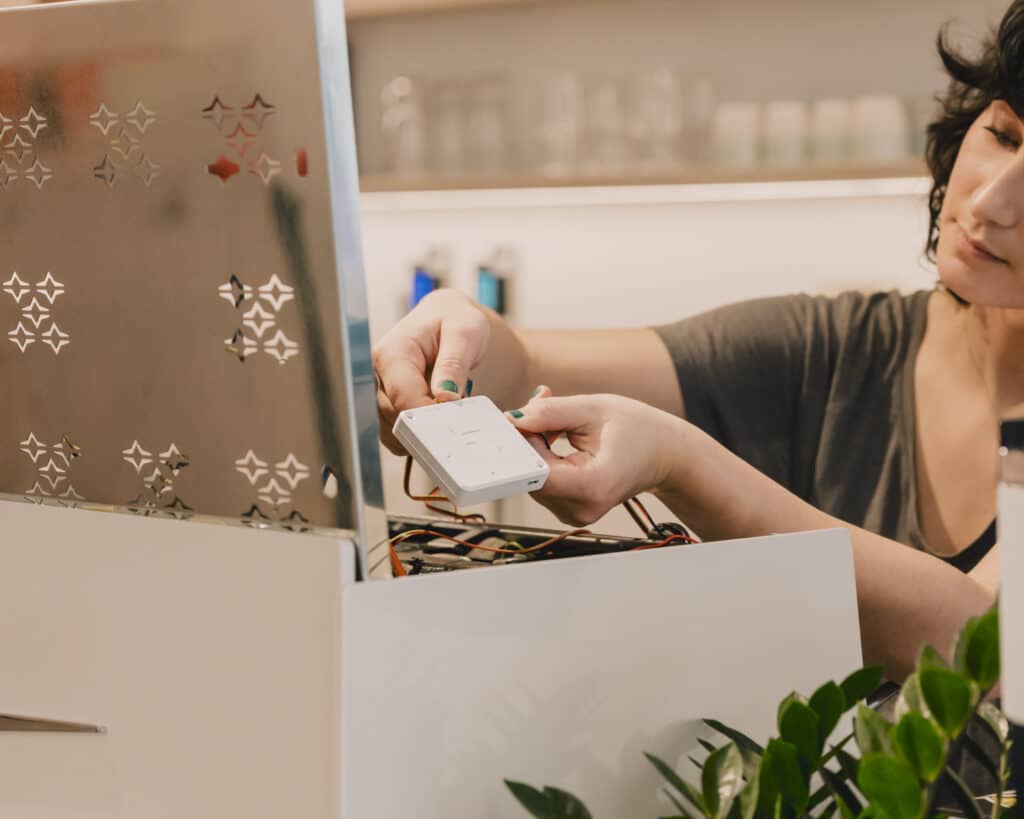
Andrew Driscoll is the area sales manager for cafes at Cropster and helps businesses pick the right software for their coffee shops. Driscoll worked with one customer who used Cropster Cafe’s data-collecting software over multiple locations to discover a problem with one of their shop’s portafilters.
“If you went back into the company’s recorded data, there’s a very obvious point where two of the shops were pulling 39-gram shots consistently, and then another one was dispensing 28 grams,” he says. After eliminating other potential sources for the inconsistency, the company used the data to narrow in on their espresso equipment, where they noticed that the portafilters had different baskets (using different basket sizes can result in inconsistently extracted espresso shots).
“After eliminating other issues, we realized it had to be that the portafilters had different basket sizes: one had a 14-gram basket, and the others [the one used to design espresso recipes] were using 19-gram baskets.”
Big Brother or Barista Benefit?
Software like Cropster Cafe and connected equipment with hardware like the BrewBeacon can provide coffee shops with ample data about each espresso shot extracted and house blend brewed. But with all this data at your fingertips, does it have the potential to make barista work feel a little “big brother-ish”?
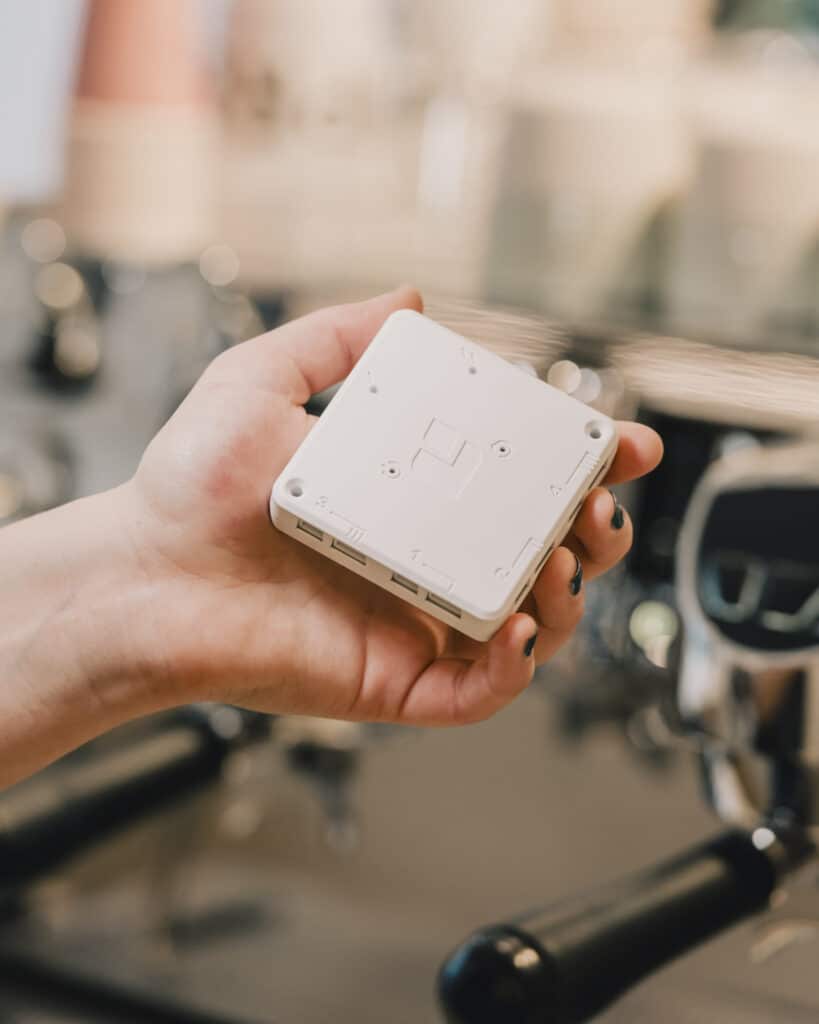
Perhaps so, especially those monitoring the data who use it punitively or become overly strict with parameters, removing the art and craft of brewing coffee. But giving baristas freedom within parameters differs from monitoring quality since data can help leaders make informed decisions rather than guessing where problems come from. And for Schöpf, technology and logging data have been tools that empower baristas to excel.
“When we first implemented it, there was the thought of ‘Does Julian not trust me anymore?’ But [the baristas] quickly realized it was not a matter of trust, but one of getting better together,” says Schöpf. “It made it easier for us to work as a team and easier to keep quality on a high level.”
“The baristas we’ve talked to love having the data behind their day-to-day work,” explains Young. “It’s this step toward professionalizing the work of a barista and giving them tools to track and manage their work.”
“And giving them a voice,” Driscoll chimes in. “Maybe a barista identifies an area where coffee quality can be improved, and they can use the data to back up their suggestion.”
Quality management tools can help retail spaces keep on track of their coffee, but these same tools can also work for roasters. Roasters can offer Cropster Cafe and BrewBeacon, or similar technology, to train and manage baristas serving their coffee at wholesale accounts. “For an independent cafe owner or operator,” says Young, “how awesome if your roaster was able to say, ‘Hey, I’ve got this tool that, as part of our agreement with you buying my coffee, I can help you better manage your cafes… and provide information from our own QC lab, to make sure that your coffee quality is as good as it can be.’ That’s a huge win.”
Five Stars for Consistent Coffee Quality
Customers notice minor coffee inconsistencies. But when coffee quality is managed using data from tools like Cropster Cafe, coffee quality issues can be identified before a customer ever notices: tools can help shops build a cohesive identity and trust with customers because beverage recipes at every location are aligned, and baristas are executing brewing parameters properly.
When we first implemented it, there was the thought of ‘Does Julian not trust me anymore?’ But [the baristas] quickly realized it was not a matter of trust, but one of getting better together. It made it easier for us to work as a team and easier to keep quality on a high level. Julian Schöpf
“Ultimately, customers want a consistent cup,” says Young.
Brennpunkt Coffee received stellar customer feedback right when it opened, and it was important for the company to maintain its positive reputation. Cropster Cafe and BrewBeacon made that possible. “We always had really good customer feedback and still do,” says Schöpf. “[Using data], I need less time to keep the quality consistent.”
Data alone won’t solve quality issues, but it can lead to more productive team conversations, solutions, and, ultimately, business growth. Leveraging tools like Cropster Cafe and the BrewBeacon empowers coffee shop owners, coffee directors, and baristas to work together across locations and brew better coffee.
Photos by Vincent Forstenlechner

